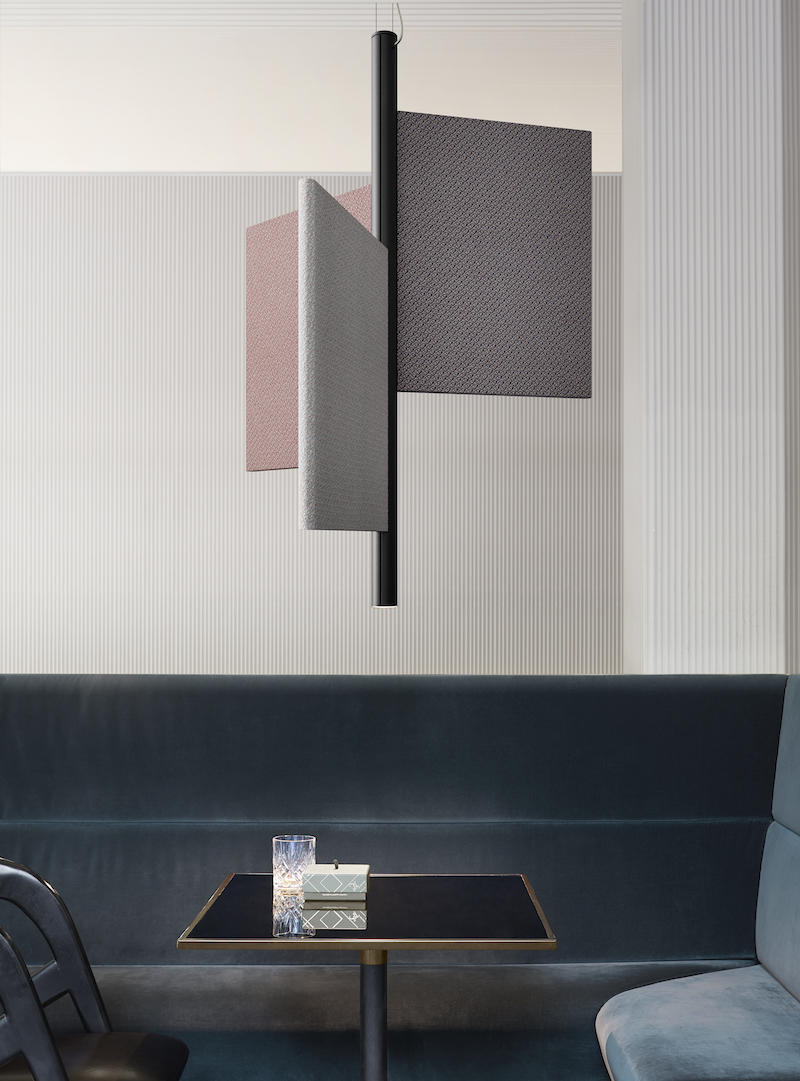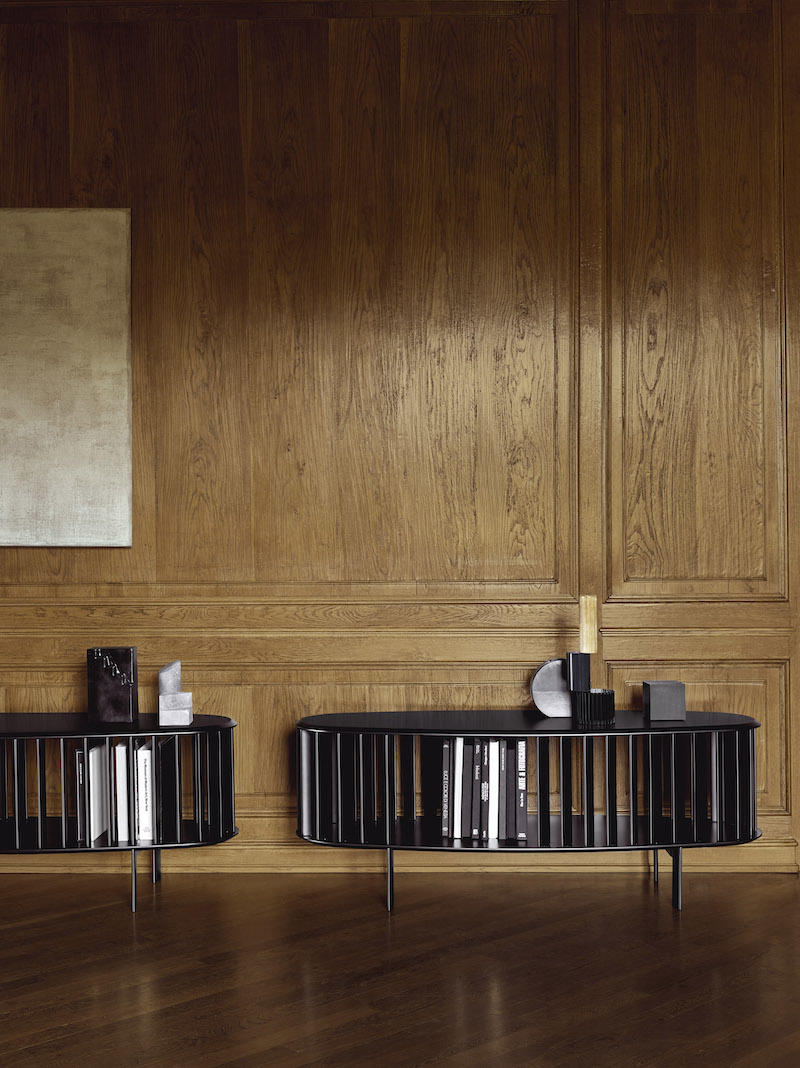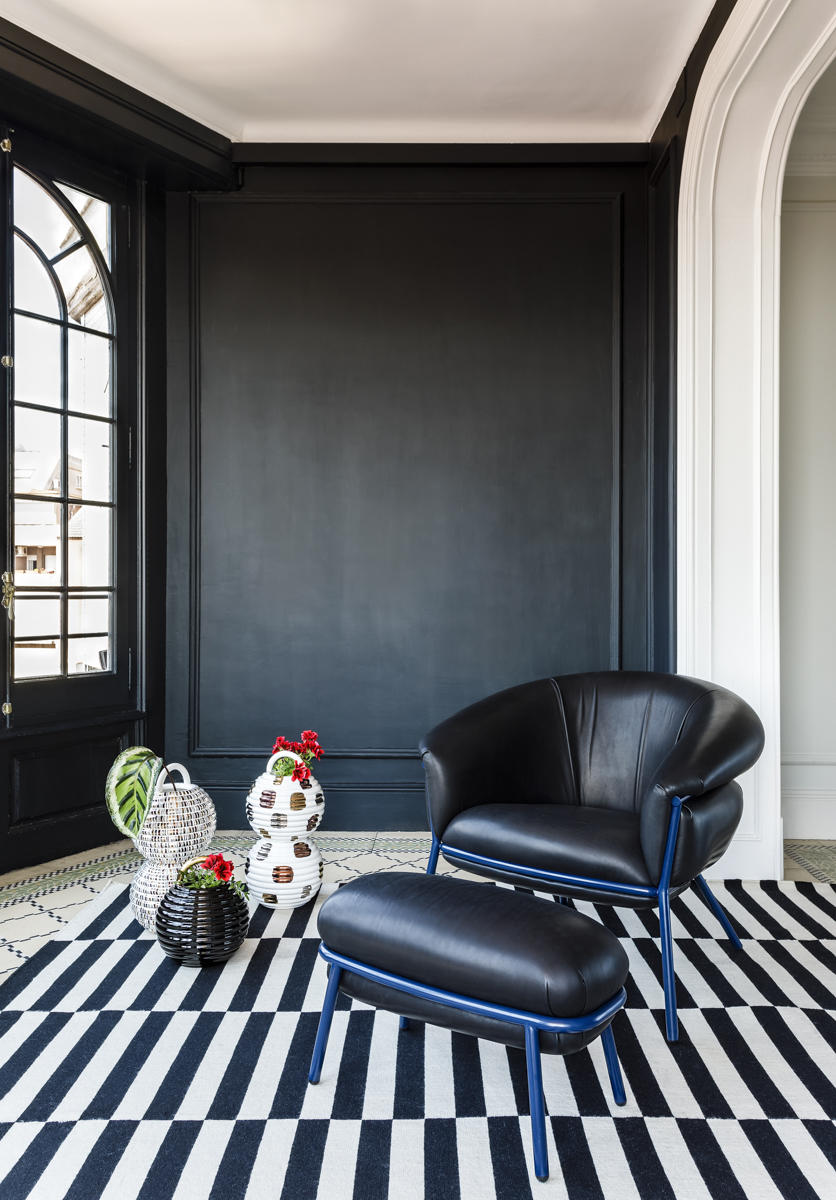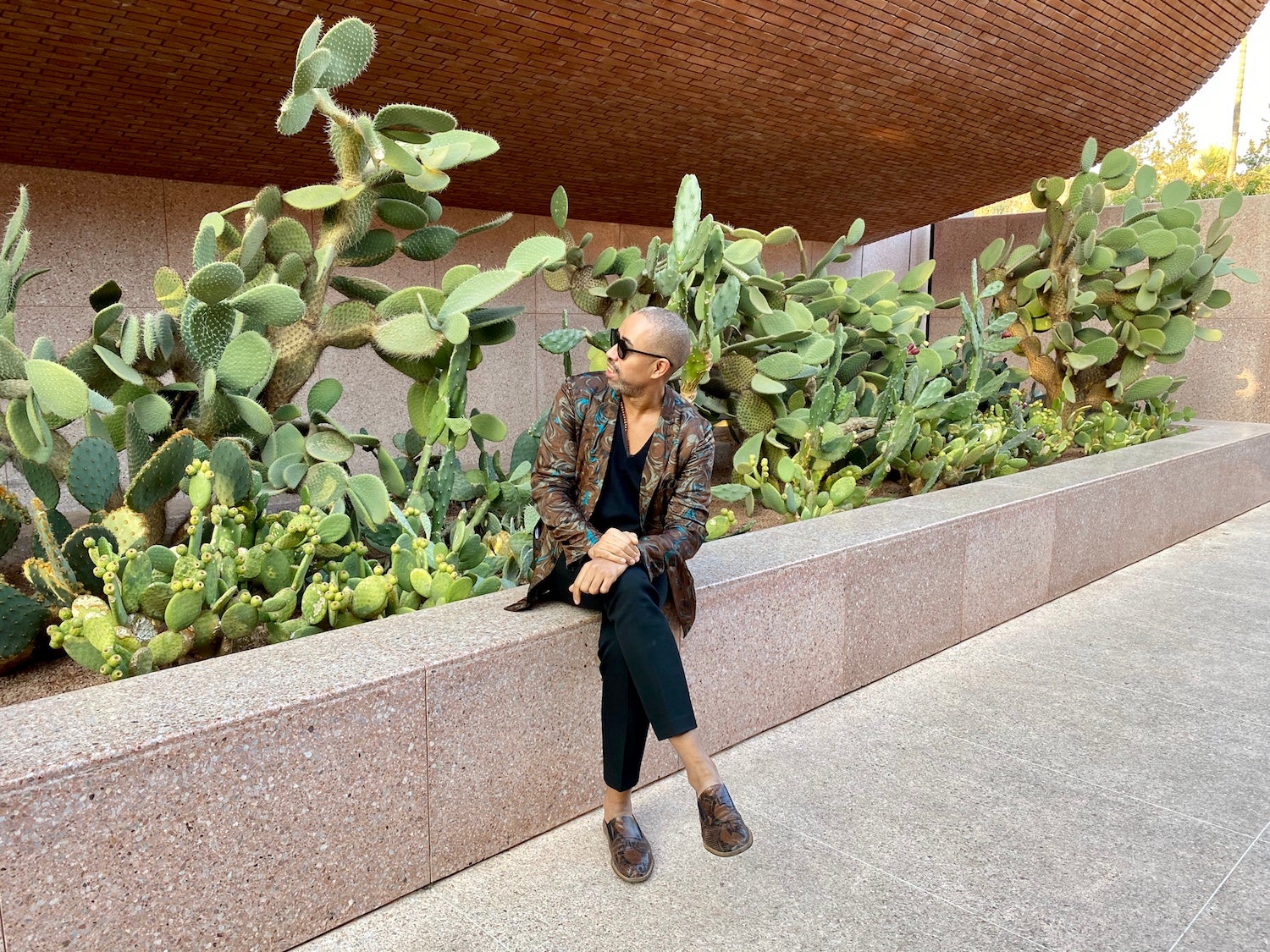Last week, Business of Home published an article outlining research done by designer and data scientist Jomo Tariku that uncovered a stark lack of diversity in the world of high-end furniture. Tariku’s method was simple: He went to the websites of major furniture companies and counted the number of Black people he saw. The results? Of 4,417 collaborations, only 14 of them were with Black designers. Three of those were with Stephen Burks.
Burks, a Chicago native who rose to prominence in the early aughts on the strength of collections with Cappellini and Missoni, is largely recognized as the first African American designer to break into the mostly white, mostly European ranks of international furniture design. BOH spoke with Burks about his career, the role race plays in design, and why a lack of diversity in high-end furniture is going to take more than token gestures from large corporations to solve.
You studied architecture in school. How did you get into the world of industrial design?
I grew up in Chicago and knew that there was this thing called architecture that I loved. When I was in high school, I wrote about Mies van der Rohe and Frank Lloyd Wright. I started in a professional degree program at the only school I applied to, which was IIT [Illinois Institute of Technology], because I wanted to study in Crown Hall [IIT’s central building, which was designed by Ludwig Mies van der Rohe]. I knew about design, but I wasn’t in direct contact with it. What I’d read studying the midcentury period was that design was something that came out of architecture. For me, it was no problem to study architecture and design buildings—and if I also wanted to design the doorknob, I could do that.

What changed?
I spent two and a half years in architecture there, then transferred to design because I had fallen in love with that scale of production—the scale of the hand, the scale of the body, the scale of the interior. More than thinking about the form of a building and its relationship to the landscape or to the city, I was interested in how people live with things. And then I returned to architecture in grad school here in New York at Columbia, because I thought it would get me closer to thinking about technology and space, which was my interest at the time.
Was there a particular moment that made you think: OK, I’m an industrial designer now, not an architect?
I hated Columbia, but when I was in my second year, there were six positions available for summer work/study abroad, and two were in Tokyo. I ended up working there for Teruo Kurosaki, who’s like the Terence Conran of Japan—he discovered Marc Newson. He invited me to work there for a summer as a guest designer. In fact, I was supposed to work for [architect] Kengo Kuma, but I went to his office, he looked at my work and said: “You’re not an architect, you’re a designer,” and that was pretty much it!
At IIT and Columbia, was there a diverse student body?
I was always the only Black student in my class. I think it’s about education and access. It’s about the idea that doing something in the arts is a luxury, because you’re not guaranteed an income. And for Black folks in America, we’re only a generation away from the civil rights movement. I’m very much conscious of the fact that only 50 years ago, Black people in this country were fighting for their lives and seriously marginalized. It’s only been 20 years that we’ve really significantly made strides in the art world. Design is still this hidden, very exclusive profession.
Did your parents want you to be in design?
My mom was a nurse, my dad was a policeman. I was estranged from my dad for many years, so we never really talked about it; it was a decision I made with my mom. My mom was concerned with how I would make a living. This is true of most Black folks in America: We don’t have generations of wealth to support us. I was the first in my family to go to graduate school. When you’re in a situation like that, [parents are] leveraging everything they have to send their kids to college, but then the kids are leveraging everything they’ll make on student loans. The goal is to have kids graduate with an income, so my mom was really concerned about how I would make a living. She actually didn’t realize that I wasn’t going to be an architect until I started working.
As the only Black student in your class, did you feel isolated? Was Columbia a welcoming environment?
It’s hard to think about it as welcoming or not. At IIT, there were a lot of students that weren’t coming from money, but most of the students in the best schools in America are coming from money, especially the Ivy League. There was a lot of emphasis on wealth, especially at Columbia. I could not relate to the people I was in class with, and they couldn’t understand why I had to work all the way through grad school.
What were your jobs in grad school?
I never worked for an architect, because I couldn’t fathom not getting paid. The rich kids in my classes worked for free for the best architects in the world, but I moved to New York with $500 in my pocket, and I’ve never gotten any help from my family. I’ve been taking care of myself since I was 18—I really had to survive. Luckily, I came with a very good list of people I should see from a good friend in Chicago—Jim Gager at Estee Lauder; an art director at MTV; Simon Doonan. I ended up doing window displays for Barneys, set design for MTV, store design for Estee Lauder. I worked for Tucker Viemeister at Smart Design. I had a really good portfolio—I survived by design.
Your first production furniture was with Cappellini in 2000. How did that come about?
I showed in 1997 at the Milan Furniture Fair with a friend. We made a collection, we spent all our money, we took it over there to a friend’s gallery—and it got barely any attention. Then I showed at the ICFF in 1998, and in 1999, a French gallery invited me to show my work, and they actually funded the development of the pieces.

I had become friends with Jasper Morrison through his sister, who owns the shoe company Sigerson-Morrison. I was walking by the shoe shop in Nolita and I saw all the furniture inside was Jasper Morrison’s. I go inside and said, “Hey, would you happen to be related to Jasper Morrison, the designer? Because all of his furniture is in here!” She says, “Yeah, that’s my brother,” and she picks up the phone and puts me on the phone with Jasper Morrison—this was 1998, and he wasn’t the superstar he is today. He took my call, and when I was in Europe, we had coffee and we became friends. He wouldn’t hire me, because he thought I would make it on my own, but he did bring Giulio Cappellini to my exhibition in 1999. And Giulio brought Ronan Bouroullec, so we were all in the same room looking at my work. Giulio Cappellini bought my work, and the next year, I was showing in Milan with all my heroes. That could never happen today.
Did that opportunity immediately lead to the next one?
At the time, I was one of two Americans working with European companies. It was really difficult to be struggling in America and have to work with clients on the other side of the world; I could barely afford to fly back and forth. I was sending my designs and trying to negotiate and trying to meet as many people as I could during Salone, and I was working really hard at it. I didn’t really have financial success in design until I started moving away from working with Italian companies.
I should be really clear here: They were incredibly supportive. My collection with Missoni in 2004 launched me into the stratosphere—that’s when I became recognized. That’s when The New York Times wrote an article about me titled “Puff Dada,” which is blatantly racist. But it also cited me as being the first African American to have an impact in the international world of design, and led to me working abroad and working with not-for-profits in the majority world—the quote-unquote developing world. It’s because of that work with Missoni, and because of that article, that I went on to work in South Africa and began to forge my own path, which is about working by hand and bringing craft back to industry.
I didn’t really recognize myself as a Black designer until that New York Times article. I thought, “I’m just an American designer trying to make it like everyone else.” There were some slights, there were some hints at who I was—I remember one article described me as being “tall like a basketballer and elegant like a jazz musician.” In Europe, they’re such homogenous cultures that they don’t understand how to deal with diversity. [For] all of my clients, I was the first Black face they were ever meeting; some of them had never even had a conversation with an African American. That kind of ignorance led to some of the racism that I encountered along the way, but it also led to me acknowledging my own identity and building upon that, using that as a kind of badge of courage and honor to forge forward.
That Times headline is cringey. I was going to say, the conception of race in Europe can be clumsy, but obviously it’s not like America does better.
What makes it complicated is that the editor [of T: The New York Times Style Magazine] at the time was Stefano Tonchi—an Italian. He thought he was doing something “cool.” Puff Dada—the connection to my interest in Duchamp with the fact that I’m Black—like, This isn’t racism, this is culture! [The European] conception of racism is very different because it’s not necessarily aligned with whiteness. American racism is always in reflection or in dialogue with white supremacy—I think that is the true distinction here. [With] Jomo’s analysis, looking at European companies—if you look at American companies, you have the same statistics or worse!
Yeah, it’s no different.
Most American companies have probably never worked with a Black designer.
Which big American companies have you worked for?
I did a consulting project with Herman Miller, it must be 10 years ago or more, but nothing was ever produced. I did a consulting project with Knoll more recently, after [their collaboration with] David Adjaye, but nothing was ever produced. Obviously they did the work with Adjaye because he was doing the museum—if you’re an architect doing a $500 million dollar building with a big FF&E budget, of course they’d want to work with you. There’s a really big difference in how Europeans see us and how Americans see us, and there’s a really big difference in how Africans are perceived and how African Americans are perceived all over the world. Today’s movement for racial equality in America is helping change that.
One thing you’ve said in other interviews is, ‘Design is a Western concept.’ Could you break that down a little?
Industrial design as we think of it was invented at the Bauhaus. It put design in service of industry—and that grew out of the context of postwar Europe. All of the other design movements that we learn of in the canon of Western history created what we think of as design today. In Italy, design was not taught as a profession until the 1980s. There was no way to study design, you could only study architecture. That’s how recent design is as an idea, and it came from the West.
It took me traveling around the world and working with other kinds of people to acknowledge that there are cultures that have been making things for generations, and the making of things has never been separated from who they are as a person, where they live, who they’re making it for, the culture they’re making it for, or the context they live in. They’re just making things they need. That is also design, but that’s never been considered “design.”
Even today, if you were to compare “luxury” with “craft”—what is really the difference? Why is it considered “craft” in South Africa or Senegal, but it’s considered “weaving” or “luxury” in France, when it’s really the same thing? The distinction is “design.” It can be an intellectual or academic pursuit separate from the culture, and it can be something that is done outside of the context of the usefulness or the maker of the thing. That is very much a Western concept.

Right. When we say the word design, what are we talking about? In a lot of contexts, it’s an intellectual framework that values the labor of some people over others.
Design is designed to establish hierarchies and to create distinction. My work has been about trying to build a bridge between the people who are actually making the things and acknowledgement in the “first world” distribution system. How do we create opportunity or make space for other people in the world to participate in design and to be allowed the progress that’s possible through design?
When you say progress, do you mean access to capital?
Absolutely. Look at all the things design does for us—it allows us to communicate, to participate, to be political, to organize, to learn, to share. All of the tools that are at our disposal in contemporary society are based on design. And the people in the other parts of the world that don’t have that kind of access unfortunately don’t have access to the same kind of progress. That kind of progress is monetary, but it’s also educational and political. It’s all of those things.
Tell me about trying to bridge that gap. How does it work, logistically, to make those opportunities happen for the artisans you work with?
We've tried all different kinds of models. The first version had me as a product development consultant working with not-for-profits. I did a lot of work in that model. The problem with that model is that not-for-profits aren’t in the business of thinking about sales and distribution. In many cases, they’ll have funding for a month, or three months or six months. They’ll bring in the designer to work with the artisan, but when the money dries up, they’re gone—and what happens with that business opportunity? That to us was a failing model.
So then we tried to be the middleman. I worked with companies like Cappellini to develop their first eco-conscious collection made in Africa. I worked directly with Moroso for the Moroso M’Afrique collection. I was the consultant that named the collection. I drew the logo in my own hand, I designed the exhibition, and they only sold my products for a season—and then they discontinued them. We realized that the markup was way too expensive. All of a sudden, craft became this luxury object—either they couldn’t sell enough of it to sustain the artists in the country or the prices were just too high, which led to the same result.
The third model, which we have been most successful at, is to align ourselves with like-minded companies—companies like Dedon that have a factory in the Philippines that employs 1,600 weavers in peak season and is capable of making 300 pieces of furniture by hand. This is our best way of working, to go there in a workshop-based practice and develop the products while we’re there. The closer the hand gets to the act of making, the more potential there is for innovation.
In order to see some of the numbers [in Tariku’s study] change, what needs to change?
This country’s history is African American history, and the injustices that this country was built on—the income inequality and the racial inequality—all of that has to be addressed. And until it is, looking at the number of designers is, I think, somehow irrelevant. The bigger conversation is about changing the very inner workings of the way that Americans think. It’s just perverse. And I think that it obviously begins with education, but it also begins with funding and income. There’s just no way to separate one from the other.
Just because a company hires a diversity officer and claims that they’re working on this or gives a certain amount of money to it, it doesn’t really solve the problem. I think the fact that it’s 2020 and we’re having this discussion for the first time is a little bit of a clue as to how much needs to change. There’s so much entitlement. As much as you probably don’t realize it, anyone—any white American who isn’t doing something in favor of racial equality and racial justice in America—is part of the problem. If you’re not actively engaged in furthering these discussions and making change, you yourself are part of the problem. If you’re being quiet about it, if you think that it’s not something you can be involved in or that it’s not your problem—or even if you think you’re not a racist—you are part of the problem, because you benefit from all the racial injustice that exists. Just by benefiting, just by living in a system that supports it, you are supporting it.
Right, by being tacitly OK with it.
If you were to look at Business of Home, any publication, you can turn it to any industry, it’s not just design. You can turn the lens on any industry. Of course, design is our industry, so we’re talking about it, but every industry needs to be having these kinds of conversations, and not just for the moment. In every aspect of our lives, we all need to be pushing for change. To be quite honest, I don’t think we’ll see change until we have reparations in this country. Nothing is going to change in this country until the economics change. Design and technology were supposed to invert the pyramid, but the opposite has happened. Things are just getting worse, and I don’t think people are going to put up with it for much longer.
Homepage photo: Courtesy of Stephen Burks Man Made




























